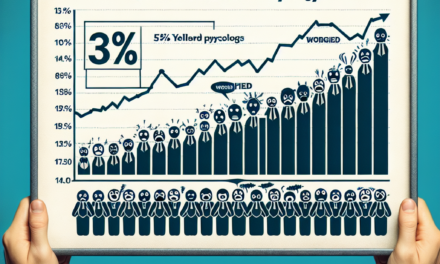“Secure Your Golden Years: Top 3 Passive-Income ETFs for a Worry-Free Retirement”
Introduction
Investing in passive-income exchange-traded funds (ETFs) can be an excellent strategy for retirees seeking to generate steady income while preserving capital. These ETFs are designed to provide regular income distributions, often through dividends, while offering the diversification and ease of trading that ETFs are known for. Among the myriad of options available, three standout passive-income ETFs are particularly well-suited for retirees. These funds not only focus on delivering consistent income but also emphasize stability and risk management, making them ideal for those in their golden years. By investing in these top-tier ETFs, retirees can enjoy the benefits of a diversified portfolio that aims to provide financial security and peace of mind during retirement.
Understanding Passive-Income ETFs: A Retiree’s Guide
As retirees seek to secure their financial future, the allure of passive-income investments becomes increasingly appealing. Exchange-traded funds (ETFs) have emerged as a popular choice for those looking to generate steady income without the complexities of managing individual stocks or bonds. Understanding passive-income ETFs is crucial for retirees aiming to maintain a comfortable lifestyle while minimizing financial stress. These investment vehicles offer a diversified portfolio, professional management, and the potential for regular income, making them an attractive option for those in their golden years.
To begin with, passive-income ETFs are designed to track specific indices that focus on income-generating assets. These funds typically invest in a mix of dividend-paying stocks, bonds, and other income-producing securities. The primary goal is to provide investors with a steady stream of income, often in the form of dividends or interest payments. This makes them particularly suitable for retirees who rely on their investment portfolios to supplement their retirement income. Moreover, the diversification inherent in ETFs helps mitigate risk, as the performance of the fund is not tied to the fortunes of a single company or sector.
One of the top passive-income ETFs for retirees is the Vanguard High Dividend Yield ETF (VYM). This fund focuses on U.S. companies with a strong track record of paying high dividends. By investing in a broad range of industries, VYM offers exposure to a diverse set of income-generating stocks. The fund’s low expense ratio is another attractive feature, as it ensures that more of the income generated is passed on to investors. Additionally, Vanguard’s reputation for sound management and transparency provides retirees with peace of mind, knowing their investments are in capable hands.
Another excellent option is the iShares Select Dividend ETF (DVY). This ETF targets companies with a history of consistently paying dividends, emphasizing those with the potential for dividend growth. By focusing on quality companies with strong fundamentals, DVY aims to provide a reliable income stream while also offering the possibility of capital appreciation. The fund’s diversified approach reduces the risk associated with investing in individual stocks, making it a suitable choice for retirees seeking stability and income. Furthermore, the iShares brand is well-regarded for its commitment to investor education and support, ensuring that retirees have access to the resources they need to make informed decisions.
Lastly, the Schwab U.S. Dividend Equity ETF (SCHD) is a compelling choice for retirees looking for passive income. This fund invests in high-quality U.S. companies with a history of paying dividends and strong financial health. SCHD’s focus on companies with sustainable dividend policies helps ensure a steady income stream, which is crucial for retirees who depend on their investments for regular cash flow. The fund’s low expense ratio and tax efficiency further enhance its appeal, allowing retirees to maximize their returns while minimizing costs.
In conclusion, passive-income ETFs offer retirees a practical solution for generating steady income while maintaining a diversified investment portfolio. By selecting funds like the Vanguard High Dividend Yield ETF, iShares Select Dividend ETF, and Schwab U.S. Dividend Equity ETF, retirees can enjoy the benefits of professional management, diversification, and potential income growth. As with any investment, it is essential for retirees to assess their individual financial goals and risk tolerance before committing to a particular ETF. However, with careful consideration and strategic planning, passive-income ETFs can play a vital role in ensuring a financially secure and fulfilling retirement.
Top 3 Passive-Income ETFs for a Secure Retirement
As retirees seek to secure their financial future, the allure of passive income becomes increasingly attractive. Exchange-traded funds (ETFs) offer a compelling solution, providing diversified exposure to various asset classes while generating steady income streams. Among the myriad of options available, three passive-income ETFs stand out as particularly well-suited for retirees aiming to maintain financial stability without the need for active management. These ETFs not only offer the potential for regular income but also come with the added benefit of diversification, which can help mitigate risk.
First on the list is the Vanguard High Dividend Yield ETF (VYM). This ETF is designed to track the performance of the FTSE High Dividend Yield Index, which consists of companies characterized by above-average dividend yields. By investing in VYM, retirees can gain exposure to a broad range of high-quality, dividend-paying companies across various sectors. The ETF’s focus on large-cap stocks with a history of stable and growing dividends makes it an attractive option for those seeking reliable income. Furthermore, Vanguard’s reputation for low-cost investing ensures that retirees can maximize their returns without being burdened by excessive fees.
Transitioning to another excellent choice, the iShares Select Dividend ETF (DVY) offers a slightly different approach to income generation. This ETF tracks the Dow Jones U.S. Select Dividend Index, which includes companies with a strong track record of paying dividends. What sets DVY apart is its emphasis on dividend sustainability and growth, ensuring that the companies included in the fund not only pay dividends but are also likely to continue doing so in the future. This focus on dividend quality makes DVY a prudent choice for retirees who prioritize income stability. Additionally, the ETF’s sector diversification helps spread risk, providing a balanced approach to income investing.
Finally, the Schwab U.S. Dividend Equity ETF (SCHD) presents another compelling option for retirees seeking passive income. SCHD tracks the Dow Jones U.S. Dividend 100 Index, which comprises high-dividend-yielding U.S. stocks with a strong record of dividend payments. One of the key advantages of SCHD is its rigorous selection criteria, which include factors such as dividend yield, dividend growth rate, and return on equity. This ensures that the ETF is populated with financially robust companies capable of sustaining their dividend payments over the long term. Moreover, Schwab’s commitment to low-cost investing means that retirees can enjoy the benefits of this ETF without incurring significant expenses.
In conclusion, these three passive-income ETFs—Vanguard High Dividend Yield ETF (VYM), iShares Select Dividend ETF (DVY), and Schwab U.S. Dividend Equity ETF (SCHD)—offer retirees a reliable means of generating income while maintaining a diversified investment portfolio. Each ETF has its unique strengths, from VYM’s broad exposure to high-yielding stocks to DVY’s focus on dividend sustainability and SCHD’s rigorous selection criteria. By incorporating these ETFs into their investment strategy, retirees can enjoy the peace of mind that comes with a steady income stream, allowing them to focus on enjoying their retirement years. As always, it is advisable for retirees to consult with a financial advisor to ensure that their investment choices align with their individual financial goals and risk tolerance.
Maximizing Retirement Income with These 3 ETFs
As retirees seek to maximize their income without the stress of active management, passive-income exchange-traded funds (ETFs) have emerged as an attractive option. These investment vehicles offer a diversified portfolio with the potential for steady income, making them ideal for those looking to enjoy their golden years with financial peace of mind. Among the myriad of options available, three ETFs stand out for their ability to provide consistent returns while minimizing risk.
Firstly, the Vanguard High Dividend Yield ETF (VYM) is a popular choice for retirees aiming to secure a reliable income stream. This ETF focuses on U.S. companies that are known for paying above-average dividends. By investing in a broad range of sectors, VYM reduces the risk associated with relying on a single industry. Moreover, its low expense ratio ensures that more of the returns are passed on to investors, making it a cost-effective option. The fund’s emphasis on established companies with a history of dividend payments provides a level of stability that is particularly appealing to those in retirement.
Transitioning to another compelling option, the iShares Select Dividend ETF (DVY) offers a slightly different approach by targeting companies with a strong track record of dividend growth. This ETF includes a diverse mix of U.S. stocks, focusing on those that have consistently increased their dividends over time. Such a strategy not only provides current income but also offers the potential for income growth, which can help retirees keep pace with inflation. The fund’s methodology of selecting companies based on dividend sustainability and growth prospects adds an extra layer of security, ensuring that the income stream remains robust even in fluctuating market conditions.
In addition to these U.S.-focused ETFs, the SPDR S&P Global Dividend ETF (WDIV) provides retirees with an opportunity to diversify their income sources on a global scale. By investing in high-yielding companies from around the world, WDIV offers exposure to international markets, which can be beneficial in spreading risk and capturing growth opportunities outside the U.S. This ETF is particularly appealing for those who wish to hedge against domestic economic downturns by tapping into the potential of emerging markets and established economies alike. The global diversification not only enhances the potential for higher yields but also contributes to a more balanced portfolio, which is crucial for retirees seeking stability.
While each of these ETFs offers unique advantages, it is important for retirees to consider their individual financial goals and risk tolerance when selecting the right investment. Consulting with a financial advisor can provide valuable insights tailored to personal circumstances, ensuring that the chosen ETF aligns with long-term retirement objectives. Furthermore, keeping abreast of market trends and periodically reviewing the performance of these ETFs can help retirees make informed decisions and adjust their portfolios as needed.
In conclusion, the Vanguard High Dividend Yield ETF, iShares Select Dividend ETF, and SPDR S&P Global Dividend ETF each present compelling opportunities for retirees to maximize their passive income. By offering diversified exposure to high-yielding stocks, these ETFs provide a reliable income stream while minimizing risk, allowing retirees to enjoy their retirement years with greater financial security. As the landscape of retirement investing continues to evolve, these ETFs remain steadfast options for those seeking to optimize their income without the complexities of active management.
Why Retirees Should Consider These 3 Passive-Income ETFs

In the realm of retirement planning, ensuring a steady stream of income is paramount for maintaining financial stability and peace of mind. As traditional pension plans become less common, retirees increasingly turn to alternative investment strategies to secure their financial future. Among these strategies, passive-income Exchange-Traded Funds (ETFs) have emerged as a popular choice, offering a blend of diversification, income generation, and ease of management. For retirees seeking to bolster their income without the complexities of active trading, three passive-income ETFs stand out as particularly advantageous.
Firstly, the Vanguard High Dividend Yield ETF (VYM) is a compelling option for retirees. This ETF focuses on U.S. companies that are known for paying above-average dividends. By investing in a broad range of sectors, VYM provides diversification, which is crucial for mitigating risk. The fund’s emphasis on high-quality, dividend-paying stocks ensures a reliable income stream, making it an attractive choice for those in their golden years. Moreover, Vanguard’s reputation for low expense ratios means that retirees can maximize their returns without incurring significant fees, thus preserving more of their hard-earned money.
Transitioning to another noteworthy option, the iShares Select Dividend ETF (DVY) offers a slightly different approach to income generation. This ETF targets companies with a consistent history of dividend payments, focusing on those with a track record of increasing dividends over time. By prioritizing dividend growth, DVY not only provides current income but also offers the potential for income growth, which can help retirees keep pace with inflation. Additionally, the fund’s diversified portfolio spans various sectors, reducing the impact of any single industry’s downturn on the overall performance. This balance of current income and growth potential makes DVY a versatile choice for retirees seeking both stability and future income enhancement.
Finally, the Schwab U.S. Dividend Equity ETF (SCHD) presents another viable option for retirees aiming to secure passive income. SCHD is designed to track the performance of high-dividend-yielding U.S. stocks, with a focus on companies that have a strong financial health and a history of consistent dividend payments. The fund’s methodology emphasizes quality and sustainability, ensuring that the companies included are not only capable of paying dividends but are also likely to continue doing so in the future. This focus on quality, combined with Schwab’s commitment to low fees, makes SCHD an appealing choice for retirees who prioritize both income and capital preservation.
In conclusion, as retirees navigate the complexities of managing their finances post-career, passive-income ETFs offer a practical solution for generating steady income with minimal effort. The Vanguard High Dividend Yield ETF, iShares Select Dividend ETF, and Schwab U.S. Dividend Equity ETF each provide unique benefits, catering to different aspects of income generation and risk management. By incorporating these ETFs into their investment portfolios, retirees can enjoy the dual benefits of diversification and reliable income, ultimately enhancing their financial security and allowing them to focus on enjoying their retirement years. As with any investment decision, it is crucial for retirees to assess their individual financial goals and risk tolerance, potentially consulting with a financial advisor to tailor their strategy to their specific needs.
Diversifying Retirement Portfolios with Top Passive-Income ETFs
As retirees seek to secure their financial futures, diversifying their investment portfolios becomes a crucial strategy. One effective way to achieve this is through passive-income Exchange-Traded Funds (ETFs), which offer a blend of stability, income, and growth potential. These investment vehicles are particularly appealing to retirees due to their ability to generate consistent income streams while minimizing the need for active management. Among the myriad of options available, three passive-income ETFs stand out as particularly suitable for retirees looking to diversify their portfolios.
Firstly, the Vanguard High Dividend Yield ETF (VYM) is a compelling choice for those prioritizing income generation. This ETF focuses on U.S. companies that are known for paying above-average dividends. By investing in a broad range of sectors, VYM provides exposure to a diversified portfolio of high-quality, dividend-paying stocks. This diversification helps mitigate risk, a critical consideration for retirees who may be more vulnerable to market volatility. Furthermore, the ETF’s low expense ratio ensures that more of the income generated is retained by the investor, enhancing the overall yield. As a result, VYM serves as a reliable source of passive income, making it an attractive option for retirees seeking financial stability.
Transitioning to another noteworthy option, the iShares Select Dividend ETF (DVY) offers a slightly different approach to income generation. This ETF targets U.S. companies with a strong track record of dividend payments, focusing on those with a history of increasing dividends over time. By emphasizing dividend growth, DVY not only provides current income but also offers the potential for income growth, which can help retirees keep pace with inflation. The ETF’s diversified holdings across various sectors further enhance its appeal, reducing the impact of sector-specific downturns. Additionally, DVY’s focus on companies with robust financial health adds an extra layer of security, making it a prudent choice for retirees aiming to preserve their capital while enjoying a steady income stream.
Finally, the Schwab U.S. Dividend Equity ETF (SCHD) presents a balanced approach to passive income and capital appreciation. This ETF invests in high-dividend-yielding U.S. stocks, with a particular emphasis on companies with strong fundamentals and a history of consistent dividend payments. SCHD’s methodology includes screening for financial strength, which helps ensure that the companies in its portfolio are well-positioned to maintain and grow their dividends. This focus on quality not only supports income generation but also provides the potential for capital appreciation, offering retirees a dual benefit. Moreover, SCHD’s low expense ratio enhances its attractiveness, allowing retirees to maximize their returns over the long term.
In conclusion, diversifying retirement portfolios with passive-income ETFs can be a strategic move for retirees seeking to balance income generation with risk management. The Vanguard High Dividend Yield ETF, iShares Select Dividend ETF, and Schwab U.S. Dividend Equity ETF each offer unique advantages, catering to different income and growth objectives. By carefully considering these options, retirees can build a diversified portfolio that aligns with their financial goals, providing peace of mind and financial security in their retirement years. As always, it is advisable for retirees to consult with a financial advisor to tailor their investment strategy to their individual needs and circumstances.
Comparing the Best Passive-Income ETFs for Retirees
When planning for retirement, ensuring a steady stream of income is paramount. For many retirees, passive-income exchange-traded funds (ETFs) offer an attractive solution, providing a blend of diversification, income generation, and relative safety. Among the myriad of options available, three ETFs stand out as particularly well-suited for retirees seeking passive income: Vanguard High Dividend Yield ETF (VYM), iShares Select Dividend ETF (DVY), and Schwab U.S. Dividend Equity ETF (SCHD). Each of these funds has unique characteristics that make them appealing, yet they share a common goal of delivering consistent income.
To begin with, the Vanguard High Dividend Yield ETF (VYM) is a popular choice for retirees due to its focus on high-quality, dividend-paying companies. This ETF tracks the FTSE High Dividend Yield Index, which includes companies that are expected to pay above-average dividends. With a low expense ratio, VYM offers an efficient way to gain exposure to a broad range of sectors, including consumer goods, healthcare, and financials. The fund’s diversified portfolio helps mitigate risk, while its emphasis on established companies with strong balance sheets provides a level of stability that is particularly reassuring for retirees. Moreover, VYM’s historical performance has demonstrated resilience during market downturns, making it a reliable option for those seeking steady income.
Transitioning to the iShares Select Dividend ETF (DVY), this fund is another excellent choice for retirees focused on income generation. DVY tracks the Dow Jones U.S. Select Dividend Index, which is composed of relatively high dividend-paying U.S. stocks. What sets DVY apart is its stringent selection criteria, which include factors such as dividend per share growth rate, dividend payout percentage rate, and average daily dollar volume. This rigorous approach ensures that the fund includes only companies with a strong track record of dividend payments. As a result, DVY tends to have a higher yield compared to some other dividend-focused ETFs. Additionally, the fund’s sector allocation is tilted towards utilities and consumer staples, sectors known for their stability and consistent cash flows, further enhancing its appeal to income-focused investors.
Finally, the Schwab U.S. Dividend Equity ETF (SCHD) offers a compelling blend of income and growth potential. SCHD tracks the Dow Jones U.S. Dividend 100 Index, which includes 100 high dividend-yielding U.S. stocks with a record of consistently paying dividends. One of SCHD’s distinguishing features is its focus on companies with strong fundamentals, such as high return on equity and solid dividend growth. This focus not only supports income generation but also provides the potential for capital appreciation, a valuable attribute for retirees looking to preserve and grow their wealth over time. Furthermore, SCHD boasts one of the lowest expense ratios in the industry, making it a cost-effective option for long-term investors.
In conclusion, while each of these ETFs—VYM, DVY, and SCHD—offers distinct advantages, they all share the common goal of providing retirees with a reliable source of passive income. By carefully considering the unique characteristics and benefits of each fund, retirees can select the ETF that best aligns with their financial goals and risk tolerance. Ultimately, these ETFs represent a strategic approach to retirement planning, offering the potential for both income and peace of mind in the golden years.
How to Invest in Passive-Income ETFs for a Comfortable Retirement
Investing in passive-income ETFs can be a strategic move for retirees seeking a comfortable and financially secure retirement. Exchange-traded funds (ETFs) offer a diversified portfolio of assets, which can provide a steady stream of income with relatively low risk. As retirees often prioritize stability and consistent returns, passive-income ETFs can be an ideal choice. Among the myriad of options available, three ETFs stand out for their potential to deliver reliable income: Vanguard High Dividend Yield ETF (VYM), iShares Select Dividend ETF (DVY), and Schwab U.S. Dividend Equity ETF (SCHD).
To begin with, the Vanguard High Dividend Yield ETF (VYM) is a popular choice for retirees due to its focus on high-quality, dividend-paying companies. This ETF tracks the FTSE High Dividend Yield Index, which includes companies that are expected to pay above-average dividends. By investing in VYM, retirees can benefit from a diversified portfolio of large-cap stocks, which are known for their stability and ability to generate consistent income. Furthermore, Vanguard’s reputation for low expense ratios ensures that more of the returns are passed on to investors, making it an attractive option for those looking to maximize their income.
Transitioning to another noteworthy option, the iShares Select Dividend ETF (DVY) offers a slightly different approach by focusing on companies with a strong track record of paying dividends. This ETF tracks the Dow Jones U.S. Select Dividend Index, which includes companies that have consistently paid dividends over the past five years. The emphasis on dividend sustainability makes DVY a compelling choice for retirees who prioritize income reliability. Additionally, the ETF’s sector diversification helps mitigate risks associated with market volatility, providing a balanced approach to income generation.
Moreover, the Schwab U.S. Dividend Equity ETF (SCHD) is another excellent option for retirees seeking passive income. This ETF tracks the Dow Jones U.S. Dividend 100 Index, which comprises high-dividend-yielding U.S. stocks with a history of consistent dividend payments. SCHD is particularly appealing due to its focus on quality and financial health, as it includes companies with strong balance sheets and robust cash flows. The combination of these factors contributes to the ETF’s potential for delivering stable income, making it a suitable choice for retirees aiming to preserve their capital while enjoying regular payouts.
In addition to selecting the right ETFs, retirees should consider their overall investment strategy to ensure a comfortable retirement. Diversification is key, as it helps spread risk across different asset classes and sectors. By including a mix of dividend-focused ETFs, retirees can create a well-rounded portfolio that balances income generation with capital preservation. Furthermore, it is essential to regularly review and adjust the portfolio to align with changing financial goals and market conditions.
In conclusion, investing in passive-income ETFs can be a prudent strategy for retirees seeking a reliable source of income. The Vanguard High Dividend Yield ETF, iShares Select Dividend ETF, and Schwab U.S. Dividend Equity ETF each offer unique advantages that cater to the needs of retirees. By carefully selecting and managing these investments, retirees can enjoy a comfortable and financially secure retirement, free from the stress of market fluctuations and economic uncertainties.
Q&A
1. **What is a passive-income ETF?**
A passive-income ETF is an exchange-traded fund designed to generate regular income for investors, typically through dividends or interest, while tracking a specific index or sector.
2. **Why are passive-income ETFs suitable for retirees?**
They provide a steady income stream, diversification, and lower management fees, which are ideal for retirees seeking stable returns without active management.
3. **What is one top passive-income ETF for retirees?**
**Vanguard High Dividend Yield ETF (VYM):** Focuses on high-dividend-yielding U.S. companies, offering a diversified portfolio with a strong income focus.
4. **What is another recommended passive-income ETF?**
**iShares Select Dividend ETF (DVY):** Targets U.S. companies with a consistent history of dividend payments, providing reliable income and moderate growth potential.
5. **What is the third top passive-income ETF for retirees?**
**Schwab U.S. Dividend Equity ETF (SCHD):** Invests in high-quality U.S. stocks with strong dividend yields and a history of consistent payments, balancing income and growth.
6. **What are the benefits of investing in these ETFs?**
They offer diversification, regular income through dividends, lower expense ratios, and reduced risk compared to individual stock investments.
7. **What should retirees consider when choosing a passive-income ETF?**
Retirees should consider the ETF’s dividend yield, expense ratio, historical performance, and the underlying index or sector it tracks to ensure it aligns with their income needs and risk tolerance.
Conclusion
The top three passive-income ETFs ideal for retirees are typically those that offer a combination of high yield, stability, and diversification. These often include:
1. **Vanguard High Dividend Yield ETF (VYM)**: This ETF focuses on U.S. companies that are expected to have above-average dividend yields. It provides retirees with a steady income stream while maintaining a diversified portfolio across various sectors.
2. **iShares Select Dividend ETF (DVY)**: Known for its focus on U.S. companies with a consistent history of dividend payments, DVY offers retirees a reliable income source. It emphasizes companies with strong fundamentals and a track record of returning capital to shareholders.
3. **Schwab U.S. Dividend Equity ETF (SCHD)**: SCHD targets high-dividend-yielding U.S. stocks with a strong emphasis on quality and sustainability of dividends. It provides retirees with a balanced approach to income and growth potential.
In conclusion, these ETFs are well-suited for retirees seeking passive income due to their focus on high-yield dividends, diversification across sectors, and emphasis on financial stability. They offer a practical way to generate income while minimizing risk, making them attractive options for a retirement portfolio.





